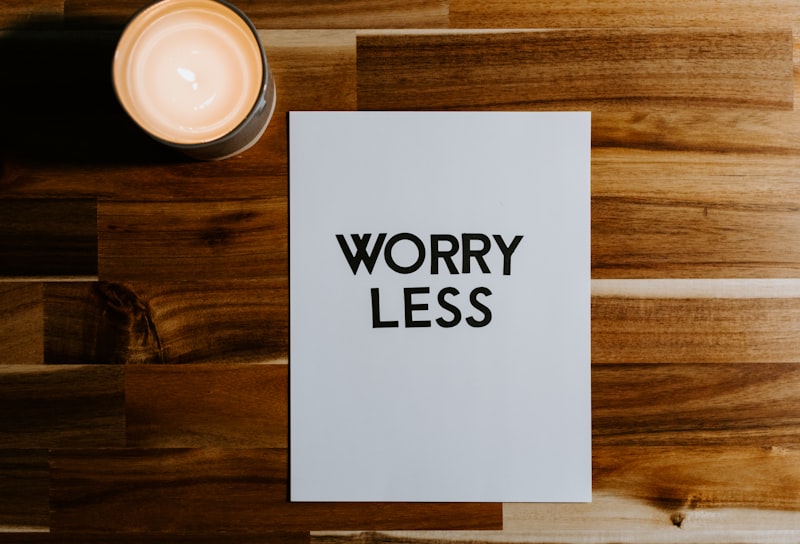One of the most powerful tools in conflict resolution is active listening. Instead of just waiting for your turn to speak, truly listen to the other person’s perspective. This not only shows respect but also helps in understanding the root cause of the conflict. Imagine conflict as a tangled thread; active listening is the gentle untangling that reveals clarity.
Empathy goes a long way in resolving conflicts. Put yourself in the other person’s shoes and try to understand their emotions and motivations. When you acknowledge their feelings, it opens up avenues for constructive dialogue. Conflict can be like a puzzle; empathy provides the missing piece that completes the picture.
When emotions run high, conflicts can escalate quickly. It’s crucial to remain calm and composed during discussions. Take deep breaths, pause if necessary, and respond rather than react. This not only defuses tension but also allows for rational thinking and problem-solving. Think of conflict as a storm; calmness is the anchor that keeps you steady.
Instead of dwelling on who is right or wrong, shift the focus towards finding a solution that benefits both parties. Brainstorm together and explore different options. This collaborative approach promotes mutual respect and cooperation. Conflict resolution is like gardening; focusing on solutions nurtures growth instead of weeds.
Clear and effective communication is essential in resolving conflicts. Express your thoughts and feelings assertively yet respectfully. Use “I” statements to avoid sounding accusatory and encourage open dialogue. Effective communication is like a bridge; it connects perspectives and fosters understanding.
In situations where resolving conflicts directly seems challenging, consider involving a neutral third party as a mediator. A mediator can facilitate discussions, ensure fairness, and guide both parties towards a mutually acceptable resolution.
Every conflict is an opportunity for learning and personal growth. Reflect on the situation afterwards and identify lessons that can help you handle future conflicts more effectively. Growth from conflict is like a phoenix rising from ashes; it transforms challenges into opportunities.
Effective conflict resolution isn’t just about resolving disputes; it’s about building stronger relationships, fostering trust, and creating a positive environment where everyone can thrive. By employing these strategies, you can navigate conflicts with confidence and turn challenges into stepping stones towards greater understanding and harmony.
Mastering Mediation: Key Strategies for Resolving Conflicts Amicably
Mediation is more than just a process; it’s an art of communication and understanding. Imagine it as a skilled conductor orchestrating a symphony where conflicting notes harmonize into a beautiful melody. It’s about guiding parties towards a mutual resolution without the noise of courtroom battles or the bitterness of unresolved issues.
At the heart of successful mediation lies active listening. It’s not just about hearing words but understanding emotions and intentions behind them. Like a detective solving a mystery, a mediator listens intently, picking up clues that reveal underlying needs and desires. This empathy creates a safe space where parties feel heard and valued, laying the groundwork for constructive dialogue.
Mediation thrives on neutrality. Unlike adversarial legal proceedings, mediators don’t pick sides. Instead, they create a neutral ground where both parties feel empowered to express themselves openly. This neutrality fosters trust and encourages openness, essential ingredients for finding common ground.
Conflict resolution isn’t about winners and losers; it’s about finding solutions that benefit everyone involved. Mediators facilitate collaborative problem-solving sessions where parties brainstorm together, explore creative options, and negotiate compromises. It’s a journey from ‘my way or the highway’ to ‘our way forward,’ where everyone has a stake in the outcome.
Clarity is key in mediation. Mediators help parties communicate effectively by breaking down complex issues into manageable parts and ensuring that messages are accurately conveyed and understood. Like a skilled translator bridging language barriers, mediators facilitate dialogue that transcends misunderstandings and builds bridges of understanding.

Behind every position lies an underlying interest or concern. Mediators delve beneath surface demands to uncover these interests, helping parties recognize shared goals and common ground. By focusing on interests rather than rigid positions, mediation unlocks win-win solutions that satisfy everyone involved.
Mastering mediation is not just about resolving conflicts; it’s about transforming relationships and fostering a culture of understanding and collaboration. Whether in personal relationships or professional settings, the principles of mediation empower individuals to navigate conflicts with grace and integrity.
Mastering mediation requires patience, empathy, and a commitment to constructive dialogue. By embracing these key strategies, you can turn conflicts into opportunities for growth, building stronger connections and brighter futures for all parties involved.
Navigating Workplace Disputes: Proven Conflict Resolution Tactics
Dealing with workplace disputes can sometimes feel like trying to navigate a maze blindfolded. Emotions run high, stakes are often significant, and finding a resolution that satisfies everyone can seem impossible. However, there are proven tactics that can effectively diffuse conflicts and restore harmony in the workplace.
One of the most powerful strategies is active listening. Imagine a coworker expressing frustration or disappointment. Instead of jumping in with your own perspective, take a moment to truly listen. Hear not just the words but also the underlying feelings and concerns. This empathetic approach can go a long way in showing that you value their viewpoint, which is often the first step towards resolving any conflict.
Another key tactic is fostering open communication. Think of communication as a bridge between conflicting parties. Encourage transparency and honesty in discussions. Sometimes conflicts arise simply due to misunderstandings or miscommunications. By creating an environment where people feel safe to express themselves, you can uncover root causes and work towards mutually beneficial solutions.
Flexibility is also crucial in conflict resolution. Consider a workplace like a dynamic ecosystem where unexpected challenges can arise. Being flexible means being willing to adapt strategies and solutions as the situation evolves. It’s about finding common ground and being open to compromise without compromising on core principles.
Furthermore, conflict resolution often requires patience and perseverance. Rome wasn’t built in a day, and neither are resolutions to complex workplace disputes. Stay committed to the process, even when it feels challenging or slow-moving. Every small step towards understanding and reconciliation counts.
Lastly, don’t underestimate the power of mediation and professional assistance. Just as you might consult a map when lost in unfamiliar territory, seeking guidance from HR professionals or mediators can provide fresh perspectives and structured approaches to resolving conflicts.
By incorporating these proven conflict resolution tactics—active listening, open communication, flexibility, patience, and mediation—you can navigate workplace disputes with confidence and foster a more harmonious and productive work environment.
The Art of Compromise: Techniques to Foster Win-Win Solutions
Firstly, understanding the interests and needs of all parties involved is crucial. It’s like being a detective, uncovering the motivations behind their positions. By asking questions and actively listening, you can dig beneath the surface and unearth what truly matters to each person.
Next, it’s important to be flexible and open-minded. Think of it like sculpting with clay—you mold and reshape your ideas based on the feedback you receive. Flexibility allows for creative solutions to emerge that might not have been apparent initially.
Another key technique is to explore multiple options. It’s like having a buffet of choices—you don’t have to settle for the first dish presented. Brainstorming different scenarios encourages innovation and ensures that the final agreement meets the diverse needs of all stakeholders.

Moreover, communication is the glue that holds compromise together. Just like a skilled conductor leads an orchestra, effective communication orchestrates harmony among conflicting interests. Clearly articulating your thoughts and actively seeking input creates a fertile ground for mutual understanding and agreement.
Lastly, remember that compromise is not about winners and losers; it’s about finding solutions that elevate everyone involved. It’s akin to planting a garden where each plant thrives in its unique way, contributing to the beauty of the whole landscape.
Beyond Negotiation: Innovative Approaches to Conflict Management
Innovative conflict management is like finding a hidden doorway in a maze—it opens up new paths that were previously unseen. Instead of focusing solely on who gets what, these approaches delve into the underlying interests and emotions driving the conflict. It’s about understanding the why behind the what.
Picture conflict as a knot. Traditional methods might try to untangle it directly, but innovative approaches zoom out to see the whole rope. By encouraging open dialogue and active listening, these methods unravel complexities and reveal threads of common ground. It’s not about winning or losing but about reweaving relationships and perspectives.
Ever heard of mediation techniques that incorporate art or storytelling? These aren’t just creative hobbies but powerful tools for conflict resolution. They allow conflicting parties to express themselves beyond words, bridging gaps that words alone might struggle to cross. It’s like painting a picture together where everyone contributes their unique brushstrokes to create a masterpiece of understanding.
What about restorative justice practices? They’re not just about punishment but about healing and rebuilding trust. Imagine conflicts being resolved not through punishment but through shared responsibility and mutual respect. It’s a bit like nurturing a wounded plant back to health—slow, deliberate care that restores vitality and resilience.
Innovative conflict management isn’t a one-size-fits-all solution but rather a toolkit of possibilities waiting to be explored. It’s about embracing uncertainty and turning it into fertile ground for innovative solutions. So next time you face a conflict, ask yourself: can we negotiate our way through this, or is there an innovative approach waiting to be discovered?
Building Bridges: Effective Communication in Conflict Resolution
At its core, effective communication during conflict resolution entails more than just talking—it’s about listening actively and empathetically. It’s akin to a skilled builder who doesn’t just lay bricks but understands the landscape to build a bridge that lasts. When conflicting parties truly listen to each other’s perspectives without interrupting or assuming, they lay the foundation for mutual respect and trust.
Moreover, clarity in communication acts as the steel reinforcements in these metaphorical bridges. Ambiguity and misunderstanding are like weak spots in a bridge, vulnerable to collapse under pressure. By articulating thoughts clearly and directly, each party ensures that their message is received accurately, minimizing the risk of further misunderstandings.
Another vital aspect is non-verbal communication—the subtle cues and gestures that can either reinforce or undermine the verbal message. It’s akin to the aesthetics of a bridge, which not only serves a functional purpose but also enhances its overall appeal. Maintaining eye contact, nodding in understanding, or using open body language can convey sincerity and openness, crucial for building rapport during conflict resolution.
Furthermore, effective communication requires emotional intelligence—the ability to understand and manage emotions in oneself and others. It’s like the craftsmanship of a bridge builder who not only understands the physics but also the terrain and weather conditions. By acknowledging and addressing emotions underlying the conflict, parties can navigate through sensitive issues with greater sensitivity and care.
Lastly, flexibility in communication is key to adapting to shifting dynamics during conflict resolution. It’s akin to a bridge that can expand or contract with changing environmental conditions. Being open to different approaches and willing to adjust communication styles can lead to innovative solutions that satisfy all parties involved.
Conflict De-Escalation: Psychological Insights and Practical Applications
In the heat of a disagreement, emotions can run high. This is where understanding the psychological dynamics at play becomes crucial. People often react based on their emotions and past experiences rather than logic alone. For instance, recognizing when someone feels threatened or misunderstood can provide clues on how to approach the situation constructively.
Psychological insights teach us that active listening is more than just hearing words—it’s about grasping underlying feelings and concerns. When someone feels truly heard, it can soften their defensive stance. Picture it like tuning into different radio frequencies; by understanding their wavelength, you can adjust your own to establish a clearer channel of communication.
Practical applications of conflict de-escalation blend these insights seamlessly into real-world scenarios. Techniques such as reframing issues to find common ground or using “I” statements to express personal feelings without accusatory language can turn adversaries into collaborators. It’s akin to finding a shared path through a dense forest—by discovering common interests, you pave a way forward together.
Moreover, understanding non-verbal cues plays a pivotal role. Body language often communicates what words cannot, offering clues to someone’s emotional state. It’s akin to reading the unspoken language of gestures and facial expressions, which can guide your responses appropriately.
In essence, conflict de-escalation merges psychological awareness with practical strategies, fostering resolution rather than escalation. By mastering these insights and applying them adeptly, conflicts can transform from battlegrounds into opportunities for mutual understanding and growth. After all, in the art of conflict resolution, the greatest victories are those where both sides emerge feeling heard and respected.
Frequently Asked Questions
What are some strategies for de-escalating conflicts in the workplace?
Discover effective strategies for peacefully resolving workplace conflicts with these expert techniques. Learn how to diffuse tension, foster open communication, and promote mutual understanding to maintain a harmonious work environment.
How do you negotiate effectively during a conflict?
To negotiate effectively during a conflict, focus on active listening, identify common goals, and seek mutually beneficial solutions. Stay calm, communicate clearly, and be open to compromise to reach a resolution that satisfies all parties.
Why is empathy important in resolving conflicts?
Empathy is crucial in conflict resolution because it fosters understanding and mutual respect. By empathizing, individuals can better perceive others’ perspectives, emotions, and needs, which can lead to more effective communication and peaceful resolutions.
What are the key principles of effective conflict resolution?
Learn about the essential principles for resolving conflicts effectively, including active listening, maintaining calmness, seeking common ground, and fostering mutual respect.
How can active listening enhance conflict resolution?
Learn how active listening improves conflict resolution by helping parties feel understood, fostering trust, and uncovering underlying issues.


